How to protect container plants from hot weather – 5 ways to help patio displays survive a heatwave
Blazing sunshine and excessive heat won't be a problem for your potted plants with these simple tips
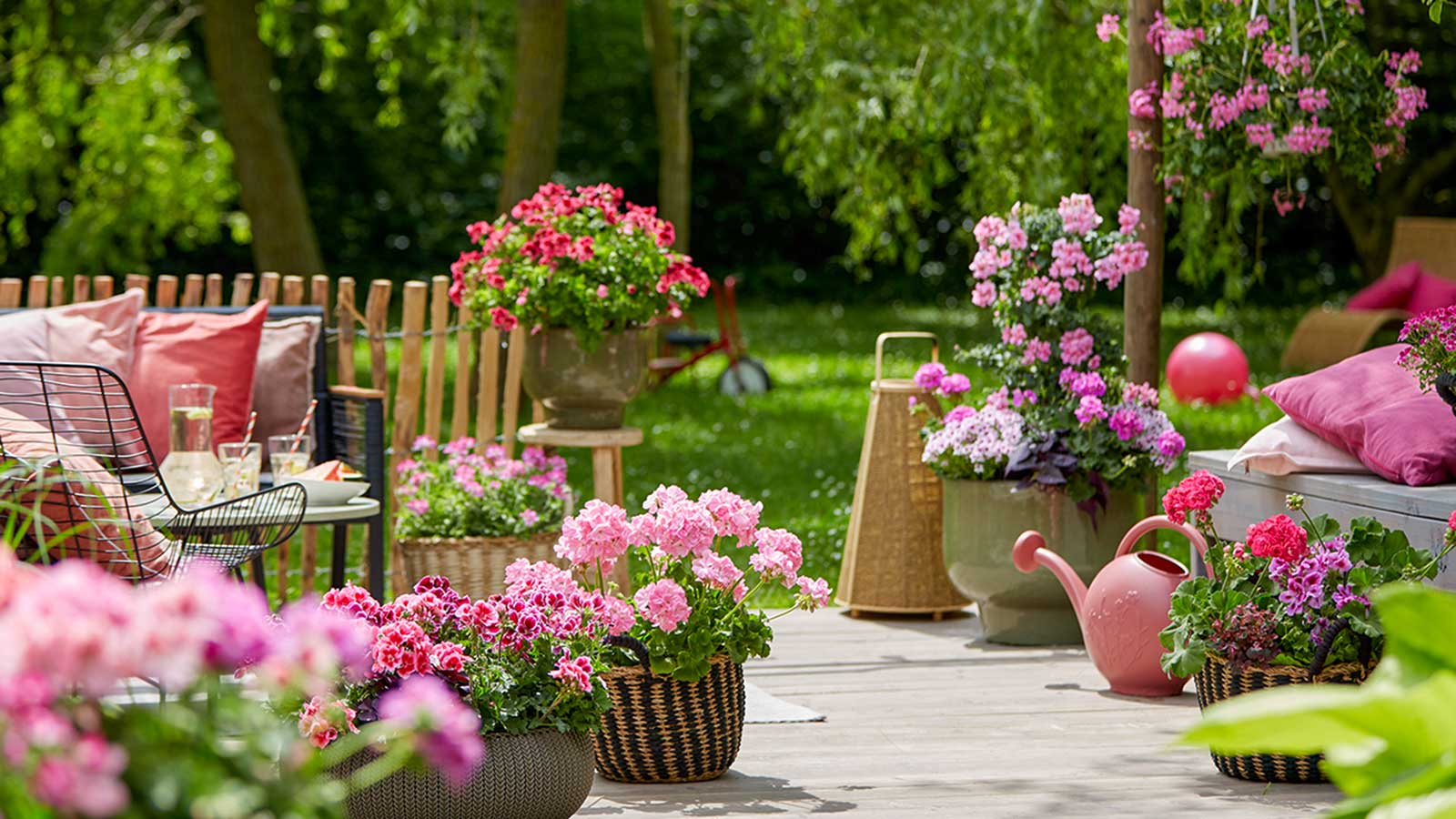

Too much sunshine can take its toll on container gardens. They're already at a disadvantage – potted plants tend to get hotter and dry out quicker than those planted in the cool ground.
The results can be scorched leaves, wilt, and even death if the roots get too dry – none of which are ideal for a summer patio display.
However, don't let hot weather deter you from planting up some pretty pots. By protecting your plants from a heatwave, you can enjoy a thriving container garden that enhances your outdoor living space.
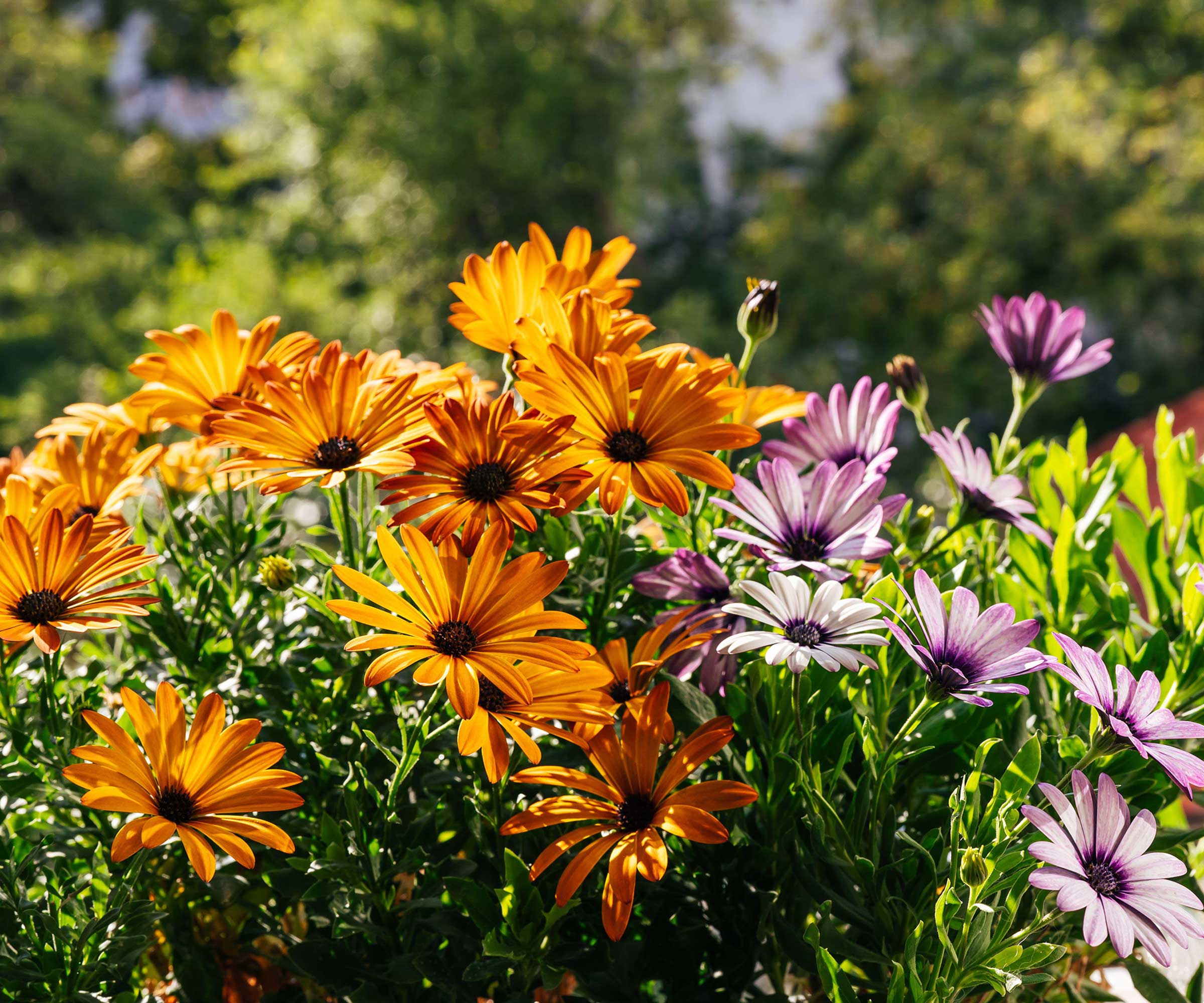
Osteospermum thrives in the sunshine
5 ways to keep your container garden happy and healthy in the heat
Keep your container garden looking its best all summer long with these easy ideas.
1. Pick drought-tolerant plants
The first step when creating a heat-proof container display is choosing suitable plants. While some will quickly flop, scorch, or shrivel when exposed to soaring temperatures, there is a wide range of tougher, drought-tolerant options.
Coastal plants are often a good bet, as are those suitable for dry gardens. Many silver-leaved plants that hail from hotter climates are also drought-resistant (think lavender and Santolina chamaecyparissus, for instance).
Ornamental grasses and succulents make wonderful drought-tolerant container plants, too. And if you want to add more flowers to the view, there are plenty of beautiful bloomers that can beat the heat – from osteospermum to sunflowers. These 'Tiger Eye Hybrid' sunflowers from Burpee are particularly gorgeous, and their compact size makes them a top choice for pots.

Lavender is a pretty scented shrub that tolerates drought well
2. Choose insulating containers
'Opt for containers made of materials that offer insulation, such as ceramic or thick plastic,' advises Tony O'Neill, a gardening expert of SimplifyGardening.com. 'This helps regulate soil temperature and reduce the impact of extreme heat on plant roots.'
Larger pots are less prone to drying out, as the greater quantity of soil will help to conserve moisture. Choosing light-colored planters can also help; the paler hue will reflect the heat.
If you've already used terracotta pots for your container garden, pay particular attention to the plants inside during sizzling hot days. Although they have a timeless aesthetic, these types of pots are very porous, meaning any water you add will evaporate quickly.
Remember, planting into pots without drainage holes is a common container gardening mistake that's definitely worth avoiding. Otherwise, the soil can become waterlogged, which can damage the plants' roots.

Tony O'Neill is an accomplished gardening expert, author, and educator. With a passion for simplifying gardening practices, he has inspired a wide audience through his popular YouTube channel and website SimplifyGardening.com. Tony's expertise empowers individuals to cultivate thriving gardens and connect with nature.
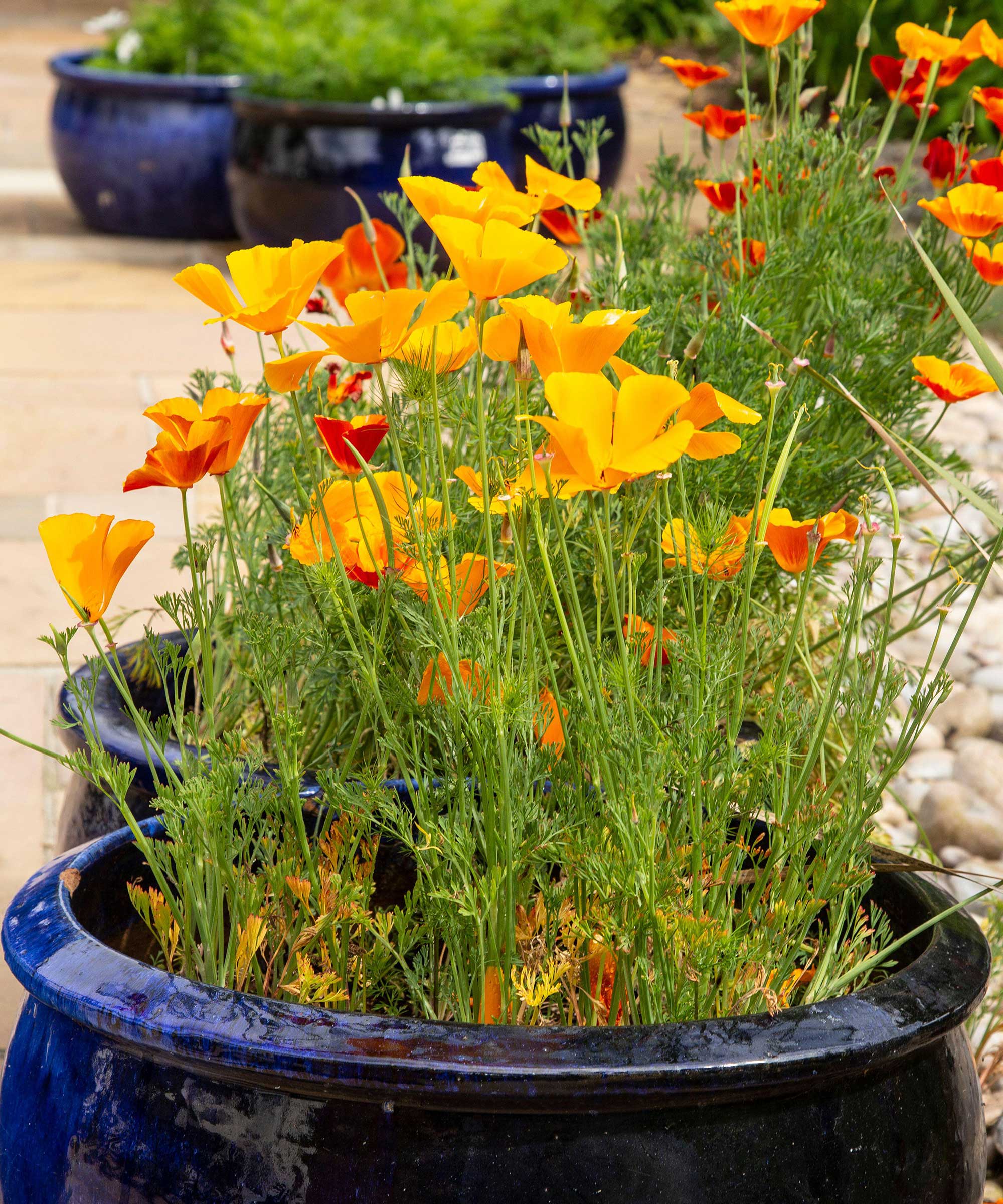
Thick, glazed, ceramic pots can help to keep plants cool
3. Add shade to your container garden
Tony recommends shielding your potted plants from direct sunlight during the hottest parts of the day. Consider moving them to a shaded area or positioning them strategically under existing shade sources, such as trees or awnings, he says.
You can also use a shade cloth – 'a helpful product that is easy to hang over a designated area of a patio or deck,' suggests Anna Ohler, the Owner of Bright Lane Gardens, a plant nursery in Michigan. 'The lightweight material dapples the sunlight exposure which can help with temperature regulation,' she explains. This JIWINNER Sunblock Shade Cloth from Amazon is well-rated and comes in four different sizes. Ensure it's fixed above the plants, without touching them, to allow for airflow.
Alternative methods to provide afternoon shade include putting bed sheets or other materials over the plants, using stakes or other supports to keep them above the plant canopy, says Dr. Clydette Alsup-Egbers, Associate Professor of Environmental Plant Science at Missouri State University. 'I've even seen gardeners use large umbrellas over their plants when it's really hot.'
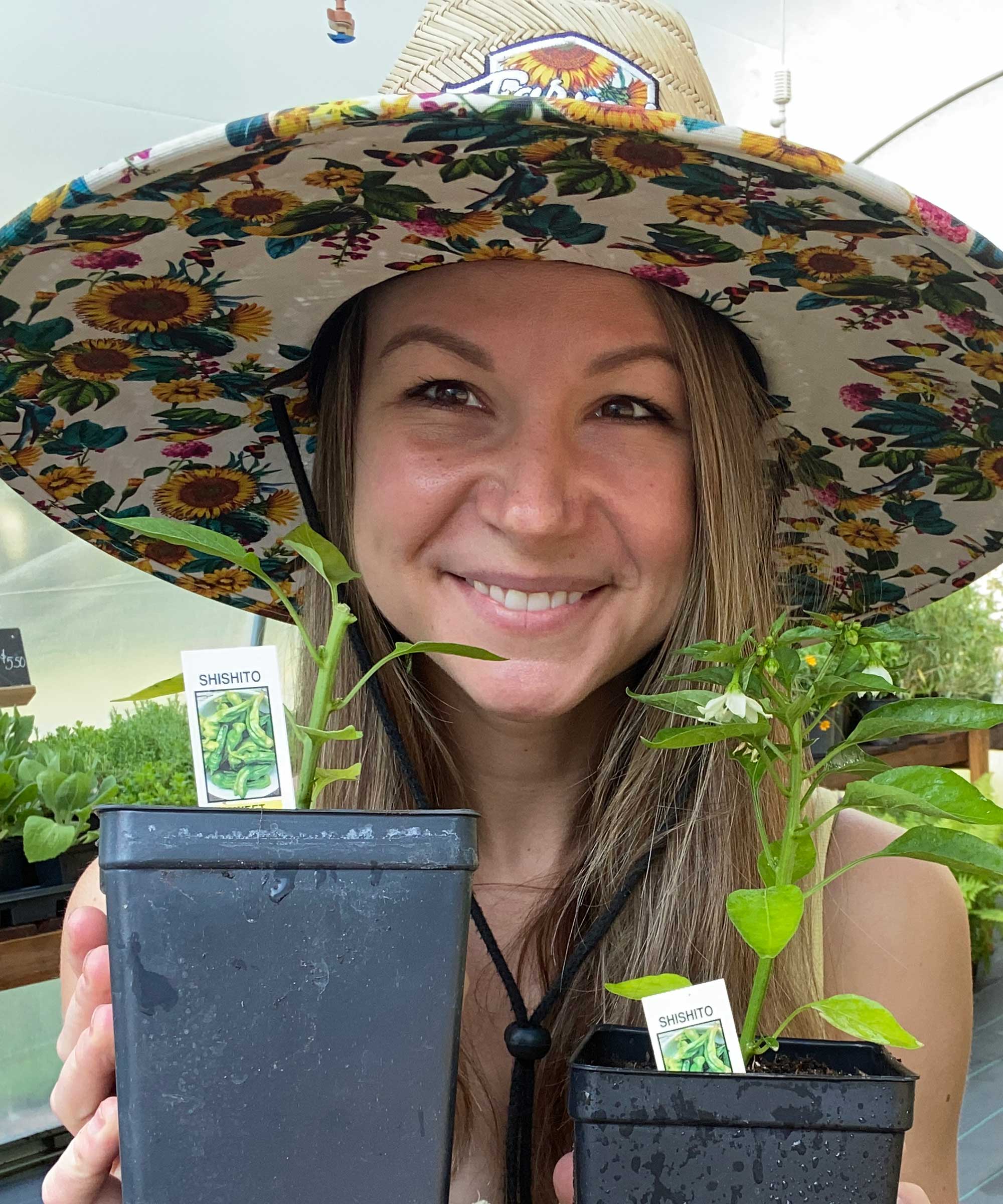
Anna is an avid plant hobbyist and the Owner and Operator of Bright Lane Gardens, a boutique plant nursery in Northern Michigan. With over a decade of experience in gardening and landscaping, she takes every opportunity to share her knowledge on all things plant related.

Dr. Clydette Alsup-Egbers is a gardening expert and Associate Professor of Environmental Plant Science at Missouri State University. Her areas of expertise include floriculture and greenhouse management. She has a farm near Springfield, Missouri, and grows a wide variety of vegetables and fruits in raised beds, containers, vertically and in the ground, wanting to experience first-hand what she teaches.

Move your pots into the shade of a large tree to help protect them, as demonstrated in this setup from Pelargonium for Europe
4. Mulch the surface of the soil
'I always recommend adding a healthy layer of organic mulch (such as cedar chips) to the surface of the soil on a container plant,' says Anna. She advises applying it 2-2.5 inches thick – it will help the soil retain moisture by slowing down evaporation rates.
'This mulch will incidentally also help insulate the plant during the winter months,' she adds. What's more, it's useful in suppressing weeds, and some mulching materials will add nutrients to the soil as they break down.
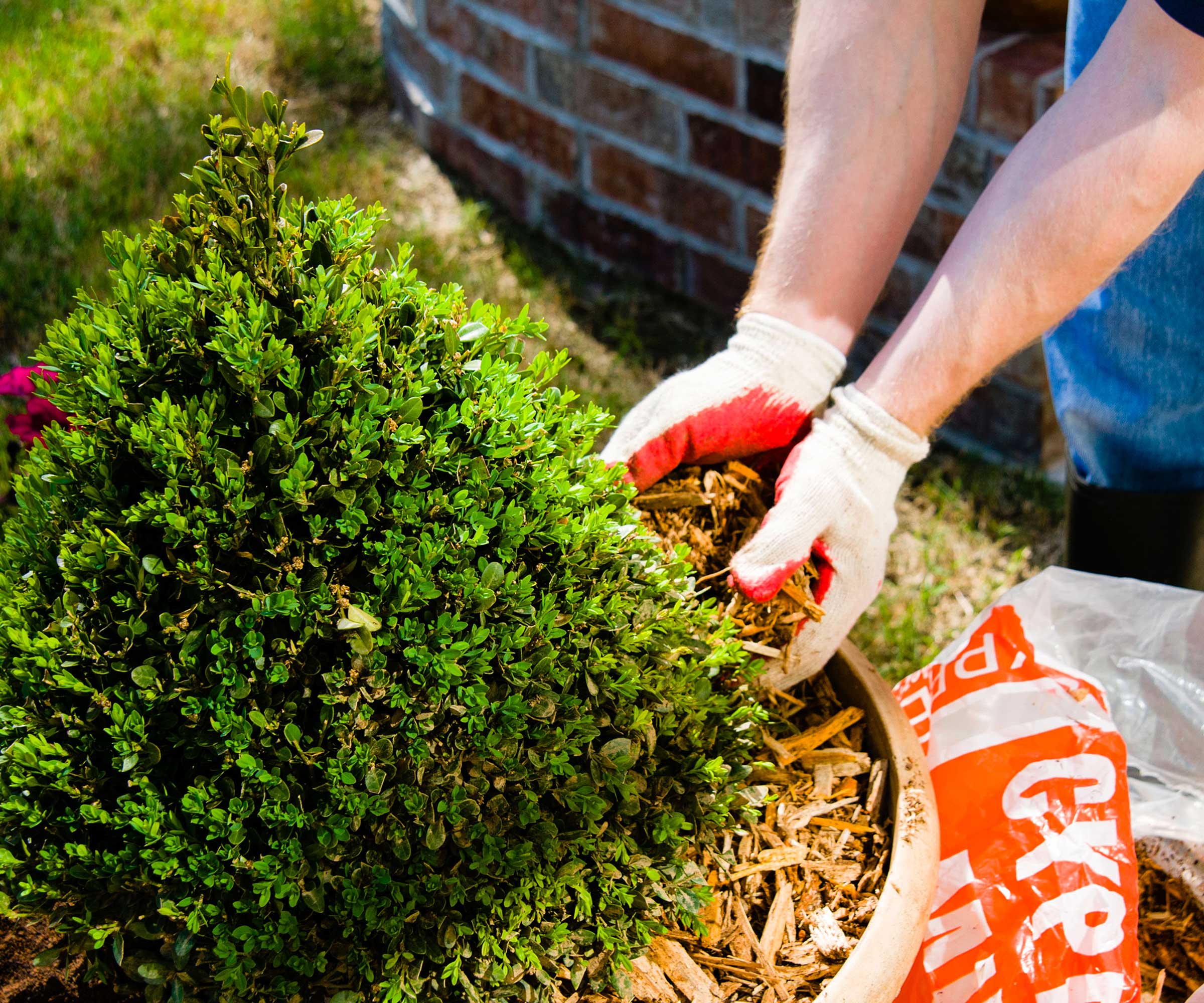
Mulching your container garden has multiple benefits
5. Keep your patio plants hydrated
Keeping your plants happily hydrated can be tricky during the height of a heatwave, but there are some tips and tricks that make it more manageable.
The Royal Horticultural Society recommends adding organic matter to your potting soil, which will improve water retention. However, they warn against adding fertilizer during planting as this can encourage too much lush growth which may be more susceptible to heat damage and reliant on frequent watering.
When it's time to water your container plants, do so deeply and thoroughly, ensuring the soil is adequately moistened, says Tony. 'However, avoid overwatering, as it can lead to root rot. Consider using a moisture meter [such as this Gouevn Soil Moisture Meter from Amazon] to monitor soil moisture levels.'
'If you are growing plants with saucers underneath, be sure to remove any standing water from the saucers,' says Dr. Clydette Alsup-Egbers. 'Be aware that plants may need water more than once a day, especially if it's a larger plant in a smaller container or if the wind is strong,' she adds.
'If using a hose, make sure to let any warm or hot water run through the hose before watering the plant,' says Anna. 'Cool water can help refresh the roots and will cool the soil.'
Tony also suggests trying self-watering containers or irrigation systems specifically designed for potted plants. 'These systems can provide consistent moisture to the plants, even during hot and dry conditions,' he says.
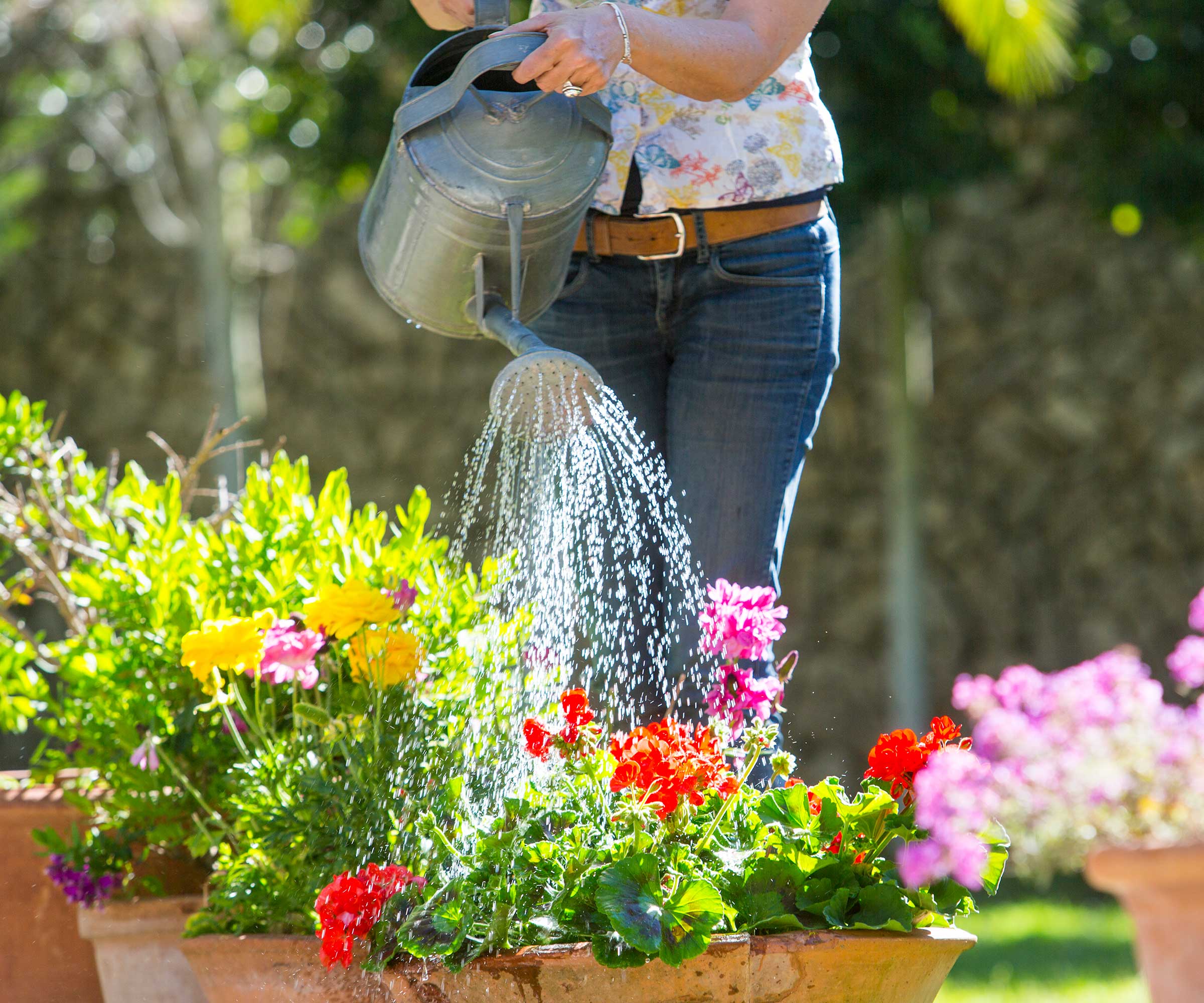
Some types of potted plants may need watering twice a day in severe heat
Summer-proofing your containers is essential for keeping your patio looking luscious and full of life. But that may not be the only outdoor area that needs a helping hand during extreme heat.
For instance, there are tips for growing grass in hot and dry weather, too, if you have a lawn. Borders can also benefit from some extra TLC, such as ensuring you water at the right time of day. There are also some gardening mistakes often made in a heatwave that are easily avoided. Bear all of this in mind, and you'll be able to maintain a beautiful backyard that's ready for alfresco entertaining in style.
Sign up to the Homes & Gardens newsletter
Design expertise in your inbox – from inspiring decorating ideas and beautiful celebrity homes to practical gardening advice and shopping round-ups.

Holly started writing about gardening five years ago, and she is a regular contributor to Homes & Gardens. She has also written many gardening features for Woman & Home and Real Homes, too. She has previous experience as a professional gardener, where she helped to plant and maintain private gardens. Holly has also looked after allotment plots over the years and loves to grow her own flowers and veggies from seed. In her spare time, she enjoys visiting local gardens, botanical drawing, and tending to her ever-growing collection of houseplants.
-
 Plants never to grow next to fruit trees
Plants never to grow next to fruit treesExpert advice on which plants to keep away from fruit trees to encourage a healthy harvest
By Jacky Parker Published
-
 Martha Stewart's tips for arranging daffodils are unbelievably simple and effective – it's the only flower advice you need this springtime
Martha Stewart's tips for arranging daffodils are unbelievably simple and effective – it's the only flower advice you need this springtimeMartha shows us that we can create gorgeous bouquets of this seasonal flower by simply trimming the stems and placing them in specific vases
By Hannah Ziegler Published